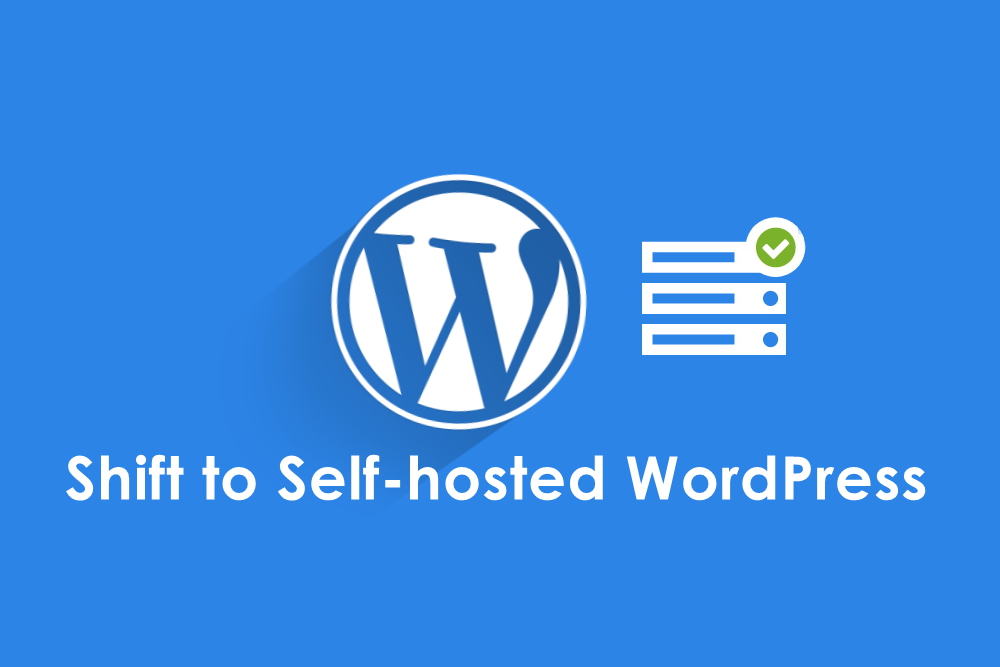Blogspot is a platform that allows beginners to blog for free. It makes sense to start a career in blogging with the least investment. However, once a writer has become accustomed to the basics of blogging, it is necessary to explore more grave and professional options. Many writers tend to shift to self-hosted WordPress in this scenario. There are plenty of guides available on the internet, which help a user to make this transition. The change from Blogspot to WordPress will need two important things at the very beginning. These are a domain name as well as hosting services. There are many service providers with whom it is possible to get an unlimited amount of hosting with a domain name that is free. The team at Wordpress also recommends some services for this purpose. There are a few important things which need to be kept in mind.

Shifting to Self-hosted WordPress Blog
1. Permalink Structure
The things which the user has to manage include the traffic. The traffic has to be regulated so that the visitors to the page do not face 404 errors. It is necessary for the migration to have a redirection of 301 perma or else a canonical tag. It will prevent the blog from losing the search engine rank that it possesses. Such a search engine rank is the result of a lot of hard work. It could cause damage to the blog if there is a loss in the position due to such an error. The permalink for Blogspot and self-hosted Wordpress are not similar. Hence, the user should fix it before the transition. Once the user changes the permalink from Blogspot to Wordpress, the transition can be made much easier. After taking care of these things, there are some other crucial things that one needs to remember.
2. Fix 301 Permanent Redirection
After the users complete the process of migration to self-hosted WordPress, they should not delete the blog of Blogspot completely. It could cause a lot of trouble including a loss of invaluable data. The 301 permanent redirection, is a critical task that the user should take care to solve. Through this task, the search engine will get to know about the shift of location for the blog. Hence, the search engine will then be able to redirect the traffic to the blog to its current domain address. It is a critical step that needs to be taken care of so that there is no loss in the search engine rank for the website. It is essential to migrate all the visitors to the new domain address of the blog. It is also necessary to migrate all the previous posts on BlogSpot to the new domain.
3. Content Migration
The user should also shift the comments made on Blogspot to self-hosted Wordpress. Once these essential steps have been completed the user must redirect the visitors to the post that they are looking for rather than only the home page in the new domain.
It is also necessary to migrate all feeds and images to the new domain accordingly. The first step is to export the blog to the new location correctly, keeping everything in mind. The method does not include a lot of manual labor but is extremely effective. It is also necessary to install Wordpress on the hosting server before beginning the process of exporting the blog. Installing Wordpress for free is also possible. The user can do this installation without changing the server name at all. This process can be a little technical. However, it is a very natural process and can be accomplished by amateurs as well. The user can easily achieve this by editing the host files.
4. Fix Broken Links
Once the users select the reception data, they can access the blog as a WordPress blog on the hosting server of their choice. However, at this point, only the user can view the blog in Wordpress. The visitors will see it as a Blogspot blog. As a result, the blog will not be dysfunctional even for a little time. The user has to make a few changes in the plugin options. After this, all the content must be migrated from one domain to another. However, the user has to do all of this without any loss of the existing traffic as well as rank. There are a few plugin options that can help in migrating the content without causing any damage. In the end, the Smart 404 plugin has to be activated so that everything functions properly. The user should also change the name for the server for better results.